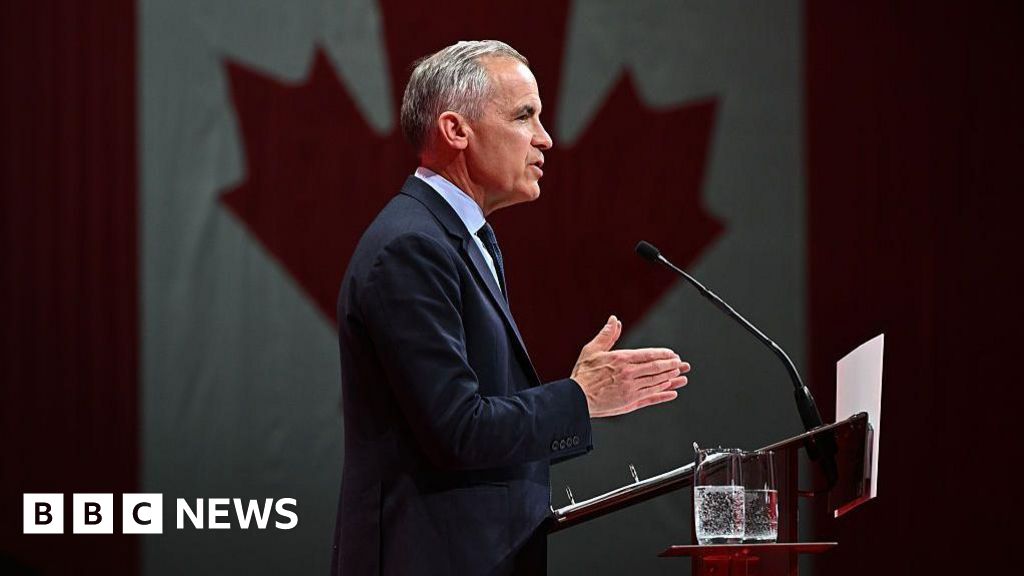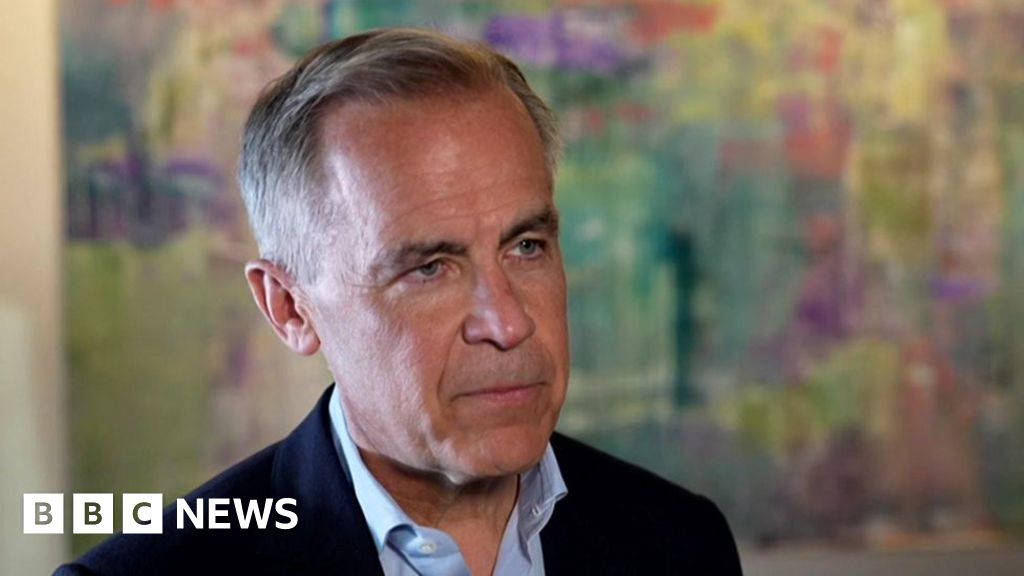When a population’s collective health baseline is systematically lowered over decades, that population is forcibly made more vulnerable to rising temperatures, extreme weather events, and other challenges induced by the climate crisis. Israel’s fifteen-month assault on Gaza was in its early months and escalating in fall 2023, causing massive amounts of death and destruction. The International Court of Justice (ICJ) has since documented “a real and imminent risk that irreparable prejudice will be caused to the rights” of Palestinians in Gaza (para. 74), who are part of “a protected group” under the Genocide Convention (para. 45). The International Criminal Court (ICC) has since issued arrest warrants for Israel’s Prime Minister Benjamin Netanyahu and former Minister of Defence Yoav Gallant. Also in fall 2023, countries including the United States and other major powers gathered at the UN Climate Change Conference (COP28) in Dubai, UAE, discussing the long-awaited climate loss and damage fund. The fund was finally operationalized at COP28’s opening on 30 November 2023.
Climate loss and damage talks continued at COP29 in Baku, Azerbaijan in November 2024. The total climate loss and damage amount pledged at COP28, approximately $700 million, is a fraction of the hundreds of billions needed annually to assist developing countries that are particularly vulnerable to climate change. The United States was criticized for its small $17.5 million pledge, given its status as the world’s largest economy and historically largest cumulative CO2 emitter. Nevertheless, the fund’s establishment was a climate justice advancement, for which credit is owed to small island countries and others who advocated for decades. What does it mean, however, for nations to join together to operationalize a climate loss and damage fund amid large-scale killing and destruction in Gaza? What is “loss” if not mass deaths from air strikes, including “staggering” numbers of children killed? What is “damage” if not famine, and the obliteration of Gaza’s infrastructure? Gaza’s survivors are the definition of a climate-vulnerable population, building on sixteen years of health and environmental destruction under unlawful blockade before October 2023.
By COP28’s 13 December 2023 conclusion, the number of people killed in Gaza since October 2023 had surpassed 18,412. After more than fifteen months, as of 11 February 2025, at least 48,219 people had been killed, and 111,665 injured. The full scale of killing is likely much higher. In July 2024, analysis in The Lancet reported the total direct and indirect death toll of Israel’s assault may reach 186,000 people or more. A January 2025 Lancet study found, from October 2023 to June 2024, approximately 64,260 people in Gaza were killed—2.9 percent of Gaza’s population.
The unlawful blockade of Gaza and unlawful occupation of the West Bank have pushed Palestine, for decades, into a position of being an exceptionally climate-vulnerable population (Krakow 2017, 2019, 2020). Palestinians have contended with infrastructural destruction and water, electricity, and healthcare restrictions. Palestinians are poised to be a population most in need of climate loss and damage funding, but the active state of “loss and damage” they are already enduring is most urgent and guarantees their climate crisis vulnerability. Major powers, including the United States under President Joe Biden, purported to support the climate loss and damage fund while under-funding it and simultaneously enabling the production of “loss and damage” in Gaza.
Following the start of his second presidency, which began on 20 January 2025, Donald Trump threatened a plan to displace Palestinians from Gaza and sabotage survivors’ efforts to return to what remains of their homes and rebuild. Several Arab countries rejected the plan. On 4 February 2025, Trump accelerated, claiming “the US will take over the Gaza Strip”. He continued, “We’ll own it”, and make Gaza “the Riviera of the Middle East”. Trump wants to displace Palestinians to “numerous sites, or it could be one large site”—he claimed Jordan and Egypt should provide “the kind of land that we need to get this done”. Trump’s bombastic statements are consistent with his style of communication, reliant on creating shock and chaos. Trump’s warped comments elicited condemnation from US lawmakers and international representatives. UN Secretary-General António Guterres said “It is essential to avoid any form of ethnic cleansing.” UN experts warned Trump’s “illegal threats” promote “a lawless world dominated by brute force that endangers us all”. Trump is attempting to weaponize Israel’s US-supported destruction of Gaza against Palestinians to justify forced displacement, and pressure Arab countries to financially and politically support his plans. Trump also issued an executive order sanctioning the ICC following its arrests warrants for Israeli leaders, threatening to block assets, and suspend US entry, for ICC officials and their immediate family members.
A long-overdue phased ceasefire agreement—implemented beginning 19 January 2025—must be sustained to prevent additional, rapid killing in Gaza and comply with the ICJ’s January, March, and May 2024 Orders in the South Africa v. Israel case. Beyond a ceasefire, precariously holding so far, states and companies ceasing transfers and sales of weapons to Israel would be a transformative step. As UN experts noted, weapons transfers “risk State complicity in international crimes, possibly including genocide”. Amnesty International concluded Israel has committed genocide. Human Rights Watch documented Israel’s “acts of genocide”. A UN Special Committee found Israel’s policies and practices “consistent with the characteristics of genocide”. Even with a sustained ceasefire, health and environmental destruction in Gaza will have devastating consequences for decades, guaranteed to impact future generations.
In Gaza, sixteen years of unlawful blockade before October 2023 led to what I call “Toxic Saturation”—a state of protracted health and environmental destruction so severe, it impedes a population’s ability to survive (Krakow 2021, 2022, 2023). Conditions before and since October 2023 guarantee Gaza’s climate change vulnerability. Gaza epitomizes the existential dangers of prolonged health and environmental destruction. The struggle for the people of Gaza shows how such violence—when it persists for years—paves the way for accelerated catastrophe.
Famine and the Role of the United States
The UN World Food Programme (WFP), UN Special Rapporteur on the right to food, and numerous UN experts confirmed famine in Gaza, which UN experts deemed “intentional and targeted”. The UN reports over 1.8 million people in Gaza were experiencing “extremely critical” levels of hunger as of October 2024. Countless harrowing examples of starvation have been reported. Nisreen al-Khateeb told Reuters how her son, Majd Salem, was born at a healthy weight of 3.49 kg (7.7 lbs). By six months old, he was suffering from severe malnourishment and a chest infection, weighing only 3.81 kg (8.4 lbs). Nuzha Awad, mother of eight-month-old triplets, told Al Jazeera that each infant weighed only 2 kg (4.4 lbs). There was no food or water. Her body was not producing breast milk. Pediatrician Dr. Ahmed Hashem Abu Nasser at northern Gaza’s Kamal Adwan Hospital reported seeing thirty to forty cases daily of infants with starvation symptoms, including five-month-old Abdul Aziz, whose heart stopped in June 2024. Abdul Aziz was resuscitated, but died from malnutrition one week later.
The ICC’s arrest warrants for Netanyahu and Gallant include “the war crime of starvation as a method of warfare”. As Special Rapporteur on the right to food Michael Fakhri notes, “famines are predictable and preventable” and states have “a duty to prevent starvation” (para. 10). Fakhri concludes “Israel has used starvation with the intent to destroy, in whole or in part, the Palestinian people” (para. 44). The human-made famine is only possible with US funding and weapons.
There has been dissonance between some major powers’ stated positions in support of climate loss and damage funding within UN climate negotiations, and their actions regarding atrocities in Gaza. Drawing on my participation in COP27, COP28, the 2023 Climate Ambition Summit during the UN General Assembly, and periods of research in Palestine (in the West Bank), I will focus on the positions of the United States.
The US role is key. Firstly, US support for Israel’s actions through funding, weapons, and diplomatic backing is unparalleled. Under the Biden administration, the United States suspended funding for the UN Relief and Works Agency for Palestine Refugees (UNRWA) while Gaza faced conditions deemed “apocalyptic” by UN officials and Doctors Without Borders/Médecins Sans Frontières. It is paramount to recognize the United States’ role in creating Gaza’s past, present, and future health and environmental conditions. Secondly, as the world’s largest economy, historically largest cumulative CO2 emitter, and current second largest CO2 emitter, the United States’ $17.5 million climate loss and damage pledge appears all the more meager when compared to its annual military budget of more than $800 billion, more than $3 billion in annual aid to Israel, and $17.9 billion to Israel since October 2023. The small US pledge to the climate loss and damage fund was inconsistent with the Biden administration’s public emphasis on the fund’s importance.
One year since the climate loss and damage fund was operationalized at COP28 with $700 million pledged, COP29 concluded with few new pledges. As UN Secretary-General Guterres described, “$700 million is roughly the annual earnings of the world’s ten best-paid footballers. It does not even account for a quarter of the damage in Viet Nam caused by Hurricane Yagi in September.” An overall $300 billion goal to assist developing countries was agreed at COP29—the New Collective Quantified Goal (NCQG). Developing countries criticized the NCQG as insufficient. It excludes climate loss and damage funding, which therefore must be assessed distinctly from other climate finance targets.
Small island states existentially threatened by sea level rise have long advocated for climate loss and damage funding, including Vanuatu, which sought to formalize arrangements in 1991 when acting on behalf of the Alliance of Small Island States (AOSIS). For decades, the United States blocked climate loss and damage progress, concerned about compensation obligations and perceptions that funding opens doors to reparations demands because of historical responsibility for emissions. At COP28, the United States finally stopped completely blocking the fund, while simultaneously worsening Gaza’s climate vulnerability.
Despite a small climate loss and damage pledge, the Biden administration increased overall climate finance and led on Green Climate Fund (GCF) pledges. Under Trump, even this partial progress is being upended. US climate action was halted and GCF pledges rescinded, to be replaced with expanded fossil fuel extraction. Trump initiated Paris Climate Agreement withdrawal in 2017, and has ordered US withdrawal again, reversing Joe Biden’s 2021 decision to rejoin.
Gaza, subjected to decades of what Sara Roy has long identified as “de-development”, will be precisely the population in need of the climate loss and damage fund the Biden administration took credit for, but severely under-funded. The Trump administration will abandon the fund altogether. Severe violence is already forcing “loss and damage” upon Gaza’s besieged population and, to quote the Genocide Convention, has “inflicted great losses on humanity”—approximately one in thirty-five Gaza inhabitants have been killed, according to analysis in The Lancet. Intentional “destruction [of a group] in whole or in part” (Genocide Convention Art. II, Rome Statute Art. 6) is an irrevocable form of intentional “loss and damage”.
Gaza’s physical “loss and damage” includes deaths and economically quantifiable infrastructural destruction. Gaza’s cultural “loss and damage” includes destroyed heritage sites and collective knowledge lost when entire families are obliterated. Israel’s blockade of Gaza and occupation of the West Bank make Palestinians disproportionately vulnerable to war crimes and unnatural climate disasters. Analysis of these issues is vital for recognizing the dangerous convergence of health and environmental harms from both “slow violence” (Nixon 2011) and acute violence.
Multi-Generational Health and Environmental Destruction: Before and Since October 2023
In its 26 January 2024 Order, the ICJ found “at least some of the rights claimed by South Africa and for which it is seeking protection are plausible”, including “the right of the Palestinians in Gaza to be protected from acts of genocide and related prohibited acts identified in Article III” of the Genocide Convention (para. 54). The Court’s provisional measures included ordering Israel to “take all measures within its power to prevent the commission of all acts within the scope of Article II” of the Genocide Convention (para. 86(1)), to “take all measures within its power to prevent and punish the direct and public incitement to commit genocide in relation to members of the Palestinian group in the Gaza Strip” (para. 86(3)), and to “take immediate and effective measures to enable the provision of urgently needed basic services and humanitarian assistance” (para. 86(4)).
In its latest 24 May 2024 Order, the ICJ reiterated its 28 March 2024 Order: “in view of the worsening conditions of life faced by Palestinians in Gaza, in particular the spread of famine and starvation”, Israel must ensure,
the unhindered provision at scale by all concerned of urgently needed basic services and humanitarian assistance, including food, water, electricity, fuel, shelter, clothing, hygiene and sanitation requirements, as well as medical supplies and medical care to Palestinians throughout Gaza, including by increasing the capacity and number of land crossing points and maintaining them open for as long as necessary; (para. 51(2)(a))
The January 2025 ceasefire agreement precariously promises increased humanitarian aid access. Catastrophic conditions forced upon Gaza, however, have been years in the making. Conditions have drastically worsened since Israel launched its assault following Hamas’s October 2023 attack on Israel, in which an estimated 1,200 people were killed and 251 were taken hostage. The summary below, though not exhaustive (which would exceed this article’s length), crystallizes the severity of long-term conditions.
Famine and Aid-Dependence
In July 2024, UN experts declared there was “no doubt that famine has spread across the entire Gaza strip … Israel’s intentional and targeted starvation campaign against the Palestinian people is a form of genocidal violence”. The United States’ $320 million floating pier, installed in May 2024, was a costly distraction from Israel’s blocking of humanitarian aid. It could only withstand three-foot waves and winds of fifteen miles per hour. Parts of the pier floated away. Humanitarian air drops were showy, ineffective, and dangerous—killing civilians when landing in populated areas.
ICC Prosecutor Karim Khan stated Israel has used starvation in part to “collectively punish the civilian population of Gaza”. In its March 2024 Order, the ICJ noted, according to the UN Office for the Coordination of Humanitarian Affairs (OCHA), “famine is setting in, with at least 31 people, including 27 children, having already died of malnutrition and dehydration” (para. 21). The Genocide Convention prohibits “Causing serious bodily or mental harm to members of the group”, “Deliberately inflicting on the group conditions of life calculated to bring about its physical destruction in whole or in part”, and “Imposing measures intended to prevent births within the group”. Upon release of Amnesty International’s report on Israel’s genocide, Amnesty’s Secretary General Agnès Callamard noted “Israel has repeatedly argued that its actions in Gaza are lawful and can be justified by its military goal to eradicate Hamas. But genocidal intent can co-exist alongside military goals and does not need to be Israel’s sole intent.”
Before October 2023, eighty percent of Gaza’s population relied on humanitarian aid. Eighty percent of youth faced unemployment. UNRWA, facing a new ban by Israel, has cyclically faced funding crises. Approximately seventy percent of people in Gaza were refugees as of 2018. Palestinians have experienced dispossession since the 1948 Nakba—“catastrophe” in Arabic—when approximately 750,000 Palestinians were displaced.
Health, Illness, and Disability
Gaza now has the highest number of child amputees per capita globally—many have undergone surgery without anaesthetics. The first confirmed case of polio in Gaza in twenty-five years—a ten-month-old infant—was reported in August 2024. Hepatitis and skin diseases have been rampant. As of 30 June 2024, the World Health Organization (WHO) reported 974,253 cases of acute respiratory infections; 103,385 cases of scabies and lice; and 104,766 cases of acute jaundice. OCHA reports that in Israel’s 2014 fifty-day military offensive, “900 people, a third of them children, sustained some form of permanent disability” and “about 100 underwent amputation of limbs”.
Water
Human Rights Watch found that Israel is responsible for “acts of genocide” through intentional water deprivation. In July 2024, Oxfam reported “Israeli military attacks have damaged or destroyed five water and sanitation infrastructure sites every three days” since October 2023. Individuals have been living on 4.74 litres of water daily, divided between drinking, washing, and cooking. UNICEF reported that children in southern Gaza could only access 1.5 to 2 litres daily. The UN states that between 50 and 100 litres of water per person daily are required for basic needs. Even in emergencies, WHO recommends a minimum of 15 litres of water per person daily.
Before October 2023, poor water quality and access in Gaza caused more than twenty-five percent of diseases. In 2017, UNICEF reported two-thirds of people drank contaminated water. In 2014, Israeli NGO B’Tselem reported that households received running water “for only six to eight hours at a time”: 25% daily, 40% every other day, 20% once every three days, and 15% one day out of four.
Electricity
On 9 October 2023, Israel’s Defence Minister Gallant ordered a “complete siege”: “no electricity, no food, no fuel”. Between 2017 and 2023, homes in Gaza received seven to thirteen hours of daily electricity—a “chronic electricity deficit” (OCHA).
Hospitals and Medical Infrastructure
Only seventeen of Gaza’s thirty-six hospitals were partially functional as of November 2024 (WHO). A March 2024 World Bank-UN report found eighty-four percent of healthcare facilities were damaged or destroyed. Lack of comprehensive medical care has long meant patients with cancer and severe diseases must seek treatment outside Gaza. B’Tselem reports Israel denied 20,000 requests from Palestinians to leave Gaza for medical treatment in 2022: “The criteria for approving these requests are unknown and the grounds for rejection are never disclosed.”
“Toxic Saturation”: Priming a Population for Annihilation
The UN reported Gaza was “unliveable” long before 2023. As my research demonstrates, US wars abroad have created “Toxic Saturation”, including in Vietnam, Laos, and Cambodia through herbicides used from 1961 to 1971 during the Vietnam War, and in Iraq through war toxins used during the 1991 invasion and 2003 invasion and occupation. The United States has repeatedly denied the health and environmental toll of its military actions for years. Though the US military is not on the ground in Gaza, Israel’s military campaign would be impossible without US support. Following the January 2025 ceasefire, a US private security firm is hiring armed US veterans to run a checkpoint in Gaza.
Direct Vietnam War civilian casualties are compounded by an ongoing health and environmental crisis because of herbicides such as Agent Orange—the dioxin-containing defoliant the United States used to destroy forests. Land cleanup remains incomplete. In Iraq, the United States used burn pits, depleted uranium, and white phosphorus. Iraqi civilians have dealt with fatal congenital anomalies and high cancer rates. These factors increase climate change vulnerability. The 2022 US PACT Act allocated $280 billion for 3.5 million US veterans who faced “toxic exposure”, ensuring numerous “War on Terror” veterans are presumed eligible for benefits and expanding recognition for Vietnam War veterans. The US government recognizes that war toxins sicken and kill, but limits recognition to US veterans—ignoring civilians still living with toxins.
“Toxic exposure” does not adequately describe conditions for civilians continuously living amid toxins. “Exposure” suggests forced contact with toxins. In cases like Gaza, Iraq, and Vietnam, people are saturated with toxins for years—their health is besieged by war toxins and remnants of weaponry. Civilians, like veterans, require compensation and healthcare. “Toxic Saturation” is an ongoing health threat.
As NGO PAX documents, large portions of Gaza are “uninhabitable” following bombings and healthcare collapse, “compounded by preexisting existential major challenges from degrading natural resources”. In June 2024, the UN Environment Programme (UNEP) reported Israel’s assault had generated 39 million tonnes of debris—107 kg per square metre, “more than five times” the debris generated in Mosul, Iraq in 2017. In December 2024, UN-Habitat and UNEP reported 50 million tonnes of debris will take twenty years to remove, including asbestos, industrial waste, and medical waste. Human remains under rubble “must be dealt with sensitively and appropriately”. Munitions will pose health risks “long after the cessation of hostilities”. Israel’s use of white phosphorus in military operations in densely populated areas violates international law. Agricultural soil is likely highly contaminated by heavy metals and other carcinogens. Bioaccumulation contaminates fish and vegetables. Toxins remain dangerous for decades.
Israel has cyclically bombarded Gaza for two decades—in 2006, 2008, 2012, 2014, 2021, and 2022. Gaza has been forcibly made into a laboratory for an unprecedentedly violent collision of the long-term health and environmental “loss and damage” of life under blockade and cyclical invasions, and short(er)-term death and destruction since October 2023. Unlivable conditions, coupled with climate impacts including extreme heat, put Gaza at extreme risk. Hadeel Ikhmais of the Palestinian Environmental Quality Authority told The Guardian the threat of climate change for Palestine is “immediate and certain”, but Palestine cannot “adapt and mitigate when we cannot access water or land or any technologies without Israel’s permission”. Climate loss and damage can occur when adaptation limits are exceeded. “Soft limits” include restrictions such as financial obstacles. “Hard limits” mean further adaptation is technically impossible. No population can overcome adaptation “limits” when those “limits” are mass atrocities.
The Intergovernmental Panel on Climate Change (IPCC) notes the Mediterranean region faces “high exposure and vulnerability” to climate change. Gaza is already experiencing the convergence of relentless bombardment and extreme heat. In April 2024, temperatures reached forty degrees Celsius (104 degrees Fahrenheit) during a heatwave worsened by climate change. Many of Gaza’s 1.9 million displaced Palestinians were living in tents, which became unsafe in extreme heat. Mohammad Ayash told NPR the tent in Rafah he built for his family’s winter survival became a “red-hot death”. The heatwave killed people such as five-month-old Malak Saed Al-Yazji. Gaza’s forced vulnerability is no position from which to build climate resilience. People forced to live through “Toxic Saturation” will be forced to experience climate loss and damage. Governments and the UN must recognize this relationship. Major powers cannot continue to refuse responsibility for the impacts of war toxins on besieged communities, while claiming to support actions to prevent climate loss and damage and build climate resilience.
“Toxic Saturation” and Famine Collide with Climate Loss and Damage
“Toxic Saturation” and famine make Gaza disproportionately vulnerable to climate loss and damage. Similar risks are forced upon besieged populations worldwide. How can the COP28 operationalization of the climate loss and damage fund be understood amid Israel’s concurrent destruction of Gaza?
Many advocates deemed the $17.5 million US climate loss and damage pledge insufficient. In contrast, France and Germany, for example, pledged roughly $100 million each. Ani Dasgupta of the World Resources Institute described some major powers’ contributions, including the US contribution, as “disappointing”. “Given the size of their economies”, Dasgupta noted, “there is simply no excuse for their contributions to be far eclipsed by others”.
In 2015, then-US Secretary of State John Kerry told Rolling Stone, “We’re not against” climate loss and damage funding, but are against “a legal remedy, because Congress will never buy into” it. In July 2023, Kerry, then-US Special Presidential Envoy for Climate, told Congress the United States would not pay climate reparations “under any circumstances,” distinguishing between the climate loss and damage fund and reparations. In Kerry’s COP28 remarks to the press, he counted the fund as an achievement:
Let’s also not lose sight of what we achieved in the first week of this conference – starting with the unprecedented adoption of a major item on the first day of a COP to operationalize loss and damage funding arrangements, leading to over $700 million in immediate pledges from both developed and developing countries.
Kerry’s statement problematically implies the United States played a significant role in reaching that $700 million mark. In a March 2024 New Yorker interview with longstanding climate leader Bill McKibben, Kerry said “We created” the fund, adding, “It’s going to have to raise money, obviously, but it’s there and it wasn’t before.” Despite decades of US resistance to climate loss and damage funding, Kerry has done more to advance climate policies than many of his US counterparts. What is problematic, however, is the Biden administration’s apparent desire to be publicly perceived as having advanced environmental justice, while providing inadequate climate loss and damage funding, and enabling mass starvation and environmental destruction in Gaza. As I wrote for The Washington Post, inaction on environmental injustice caused by US-led or US-supported wars puts the United States out of step with developed countries supporting climate loss and damage funding and “degrades U.S. credibility on global environmental policymaking”.
The ICJ and ICC, despite institutional imperfections, are addressing starvation and environment-related damage in Palestine. Although the United States is not a party to the ICC’s Rome Statute, these legal developments leave the United States increasingly isolated in its support for Netanyahu’s government. “Ecocide”, as I analyzed for Opinio Juris, is not an established Rome Statute crime. However, intentional “starvation of civilians as a method of warfare” (Art. 8(2)(b)(xxv)) and “Intentionally launching an attack” knowing it will cause “widespread, long-term and severe damage to the natural environment which would be clearly excessive in relation to the concrete and direct overall military advantage anticipated” (Art. 8(2)(b)(iv)) are war crimes.
Historically, famine was weaponized against civilians or part of structural violence, such as in twentieth-century Ukraine in the Holodomor and nineteenth-century Ireland in the Great Famine. Gaza has been subjected to famine at lethal speed and scale. Special Rapporteur Fakhri explains,
By December [2023], Palestinians in Gaza made up 80 per cent of the people in the world experiencing famine or catastrophic hunger. Never in post-war history had a population been made to go hungry so quickly and so completely as was the case for the 2.3 million Palestinians living in Gaza. (para. 1)
It is against international law, and politically unsustainable, for the US government to enable starvation tactics. As historian Rashid Khalidi notes, US obstruction of UN Security Council efforts for a ceasefire discredited not only the UN, but harmed “the legitimacy of the United States’ position”.
Greenhouse gas emissions from the first 120 days of warfare exceeded twenty-six countries’ combined annual emissions. Military emissions undoubtedly obstruct climate justice. Even if conducted on a low-emissions basis, however, military bombardment could never be “green”—as proven by the human and environmental decimation of Gaza.
Justice for People with Disabilities and Health Conditions
Destruction in Gaza will have grievous consequences for generations, compounded by forced vulnerability to climate change. This harms people who were living with disabilities and health conditions before October 2023—often from previous bombardments—and newly injured people, as I discussed in a December 2023 podcast episode.
58,000 Palestinians with disabilities lived in Gaza before October 2023, according to the Palestinian Central Bureau of Statistics. In October 2023, OCHA estimated that more than fifteen percent of Gaza’s 1.4 million internally displaced people had disabilities. People with disabilities cannot heed evacuation orders, particularly when bombarded en route to so-called humanitarian zones. In global climate policymaking, people with disabilities often remain an afterthought. Gaza is a large-scale, horrific manifestation of why this framing is dangerous and false.
As I explained in COP28 sessions hosted by WHO and OCHA, people with disabilities, and their families and advocates, have unique insights that must influence reform of humanitarian and climate policies. The UN climate negotiations approach to climate loss and damage is inadequate for people with disabilities, and for all civilians in developing countries, particularly those living under bombardment.
Accountability
Gaza has been enduring continuous “loss and damage”, long before climate loss and damage has fully hit. Most urgently, the ceasefire must be sustained to stop acute violence. The UN and all countries must vehemently challenge all illegal threats of forced displacement, whether from the Trump administration, Israel’s government, or any other sources. The UN and all countries participating in the climate negotiations process must recognize that communities harmed by military bombardment and ensuing “Toxic Saturation” are forcibly made more vulnerable to climate change. Developed countries must increase climate loss and damage funding, but this funding alone will be insufficient without accountability for large-scale killing and destruction.
Israel, the United States, and all states that have inflicted or permitted both acute and long-term destruction and death must be held accountable. Without accountability, climate loss and damage procedures will remain inadequate for addressing the urgent needs of people most harmed by the climate crisis as well as military bombardment, blockade, occupation, and forced starvation. Without accountability, global powers can either take credit for climate justice (as the Biden administration problematically did) or roll back climate justice efforts (as the Trump administration is dangerously doing) while simultaneously failing to fulfill fundamental obligations to prevent genocide and mass atrocities.

 Movie
Movie 2 months ago
76
2 months ago
76 




![Presidents Day Weekend Car Sales [2021 Edition] Presidents Day Weekend Car Sales [2021 Edition]](https://www.findthebestcarprice.com/wp-content/uploads/Presidents-Day-Weekend-car-sales.jpg)



 English (United States)
English (United States)